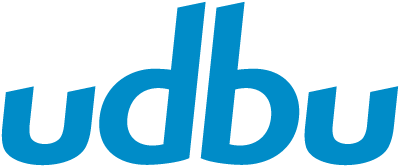Are Two Heads Better Than One in Fiber Laser Cutting?
Are Two Heads Better Than One in Fiber Laser Cutting?
In the world of fiber laser cutting, innovation is key to improving efficiency, precision, and overall productivity. One of the latest advancements gaining traction in the industry is the use of dual-head fiber laser cutting systems. But the question remains: Are two heads better than one? Let's explore the benefits and potential challenges of using a two-head system in fiber laser cutting and whether it’s the right choice for your manufacturing needs.
What is a Dual-Head Fiber Laser Cutter?
A dual-head fiber laser cutter is a system that features two laser cutting heads, rather than just one. These two heads can either work independently on separate parts of the material or in a synchronized manner to complete a single cut. This configuration is designed to enhance productivity and reduce processing time by allowing more complex tasks to be accomplished in less time.
The Advantages of Dual-Head Fiber Laser Cutting
1. Increased Cutting Speed
One of the most significant advantages of using a two-head system is the potential for increased cutting speeds. When two heads operate simultaneously, they can halve the time it takes to cut larger sheets or perform intricate tasks. This parallel operation helps maximize machine throughput, especially for high-volume manufacturing environments.
2. Enhanced Precision in Complex Cuts
Dual-head systems offer enhanced precision when performing complex, multi-pass cuts. Since each head can be independently controlled, manufacturers can fine-tune the settings for each head, improving the accuracy and quality of the cut, especially for intricate or difficult-to-cut materials.
3. Higher Efficiency in Material Utilization
With two heads working together, it’s possible to reduce material waste. The heads can be positioned to optimize cutting paths, ensuring more material is used effectively. This is especially beneficial when working with expensive metals or materials where waste reduction can lead to substantial cost savings.
4. Improved Productivity in Batch Processing
When dealing with large batch orders, dual-head systems can cut multiple parts at the same time. This improves the overall efficiency of the machine, enabling faster turnaround times for projects that require numerous parts to be cut from large sheets.
5. Reduced Downtime
In some cases, dual-head systems can also help reduce downtime. If one cutting head encounters an issue, the second head can continue to operate, reducing the overall impact on production schedules.
Challenges of Dual-Head Fiber Laser Cutting
1. Increased Complexity
With dual heads, there is a level of increased complexity in the system’s operation. Operators need to manage two laser heads and their respective settings, making the process more intricate than with a single-head machine. This requires highly trained personnel to ensure everything runs smoothly and to avoid any errors during operation.
2. Higher Initial Investment
The cost of acquiring a dual-head fiber laser cutter can be significantly higher than that of a single-head machine. Not only does the equipment cost more, but maintenance and operational costs may also increase. Companies need to weigh the long-term benefits of increased speed and efficiency against the higher upfront investment.
3. Maintenance and Repairs
Maintaining a dual-head system can be more challenging than a single-head machine. Both laser heads need to be regularly calibrated, and the overall system requires more attention to keep everything in optimal condition. This can lead to increased maintenance costs and potential downtime if one of the heads requires repair.
4. Potential for Uneven Performance
While dual-head systems can work in sync, there’s always a possibility of one head outpacing the other or not performing optimally. Any imbalance between the two heads could lead to inconsistent cuts, affecting the overall quality of the finished product.
5. Material Compatibility
Not all materials are ideal for dual-head cutting. Some materials might behave differently under the laser, leading to variations in cutting quality if not carefully monitored. Materials with varying thickness or compositions might present challenges when trying to achieve uniform results with both heads.
Is a Dual-Head Fiber Laser Cutter Right for You?
The decision to invest in a dual-head fiber laser cutter should be based on several factors, including the type of materials you’re cutting, the volume of production, and the complexity of your cutting tasks. Here are a few questions to help guide your decision:
- High Production Volumes: If your facility handles large orders or repetitive batch processing, a dual-head system could significantly boost your output.
- Complex Designs: For intricate and detailed designs that require multiple passes or precision cuts, a dual-head system may offer an advantage in terms of accuracy and efficiency.
- Material Variety: If you work with a wide range of materials with varying thicknesses, ensure the dual-head system can handle such diversity effectively.
- Budget Considerations: The initial investment and ongoing operational costs are higher for dual-head systems, so consider whether the long-term benefits justify the upfront cost.
Conclusion
In conclusion, two heads can be better than one when it comes to fiber laser cutting—especially in terms of productivity, speed, and efficiency. However, the decision to adopt a dual-head system should be carefully considered based on your specific needs, production volumes, and budget constraints. For businesses that handle high-volume, complex cutting tasks, the investment in dual-head fiber laser cutting technology can provide significant returns. However, it's essential to be aware of the added complexities, costs, and maintenance requirements involved.
Ultimately, whether or not a dual-head fiber laser cutter is the right choice comes down to your unique operational demands and goals.
